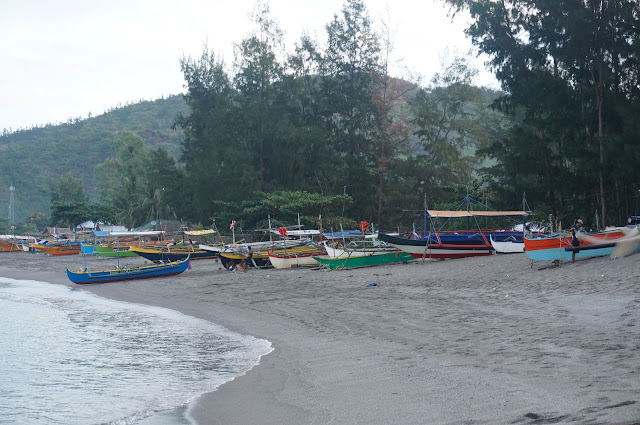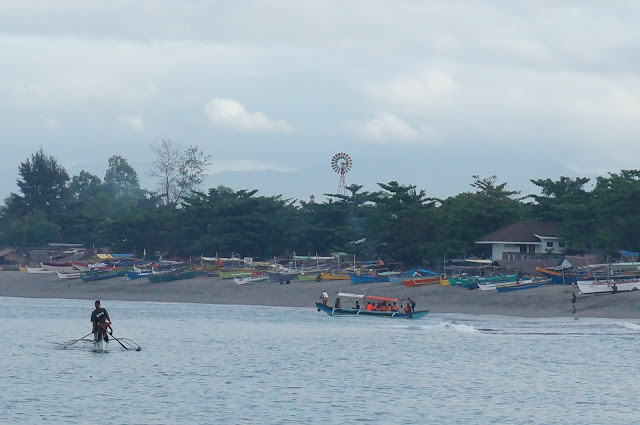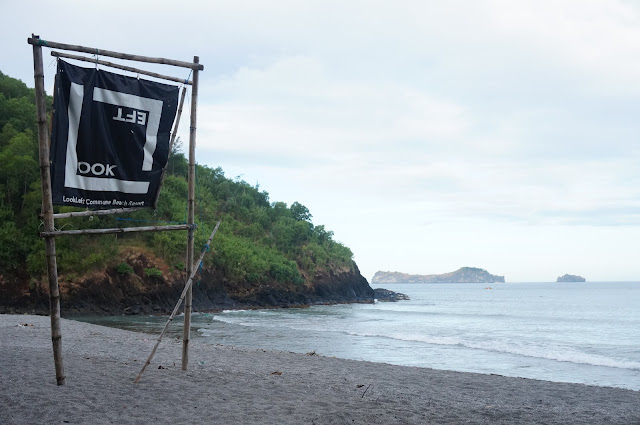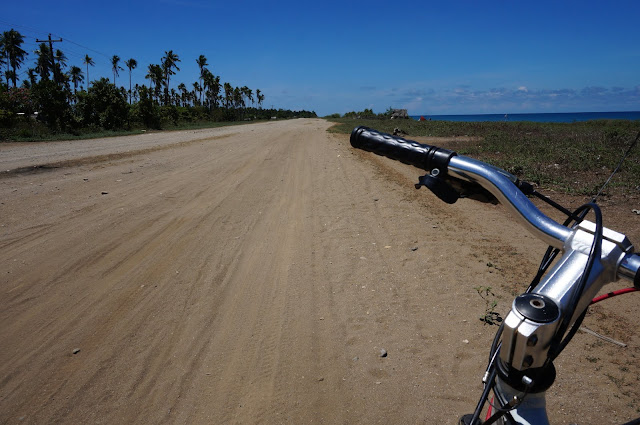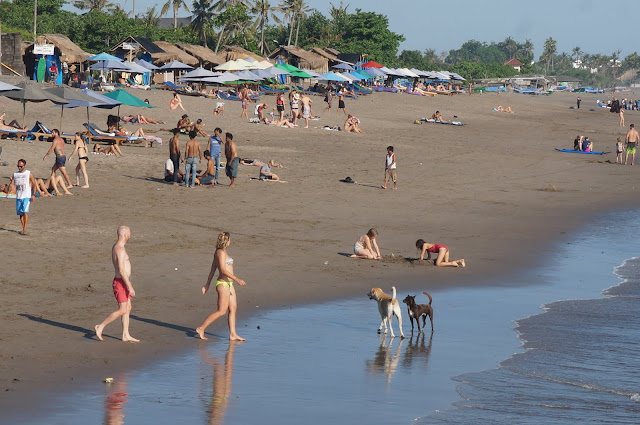I remember the time when travelling solo was the scariest thing in the world. There was nothing in particular that I was scared about but I was scared out of my wits. I kept imagining vague scenarios that quickened my pulse and kept me awake.
At the same time, it was also the most exciting thing in the world. It presented a totally novel and insane idea that was so out of my current world. I dreamed of unknown opportunities, destinations, and experiences that outweighed the fears and kept me moving.
When I first explored the idea of solo travel, travelling outside of work obligations and family holidays was a very young concept. Most people travel not out of want but of need while the rest simply had the time and money to spare. In my case, however, I travelled purely because of want and strict budgets have to be set to make it possible.
Because of this, whenever I tell people that I am going somewhere, they find it difficult to understand that I am not doing it for work and that I am neither on a holiday. What's more, I go alone with only my laptop and phone for company. They respond with so much confusion that I tend to question myself as well.
Nevertheless, I do know that travelling solo is something that I sincerely enjoy and am passionate about. While most people turn away from the work of making plans and arrangements for their vacations, I indulge in carefully designing my routes -- uncovering different means of moving from one place to another, searching diligently for prices and fares, and picking out known and unknown locations. To me, the journey matters more than the destination and stepping onto a new place is more breathtaking than the sceneries. It's not uncommon that I suddenly pause with the realization that I am, once again, headed to somewhere unfamiliar.
Now two years since I began my pursuit, I realized that travelling solo no longer scares or excites me. Gone are the wild thoughts and baseless worries that fed my doubts. Gone also are the hopeful anticipation and hazy daydreams that filled me with wonder. Instead, I feel comfort, normality, and familiarity even when arriving for the first time in a country whose language I cannot decode.
Though the experience is markedly different now, the same things that compelled me to travel solo persist still. I may no longer walk around with wide-eyed wonder like a kid in an amusement park, or with paranoid unease for pre-empting mistakes, but each new environment still amazes me and each unknown still worries me. Most importantly, I travel still because I want to expand my comfort zone and to incorporate more places into my personal reality.
Definitely, my preferences and goals will continue to change as I gain more years and experiences. But I am sure that no matter how familiar and unexciting solo travel becomes, it will never stop being amazing and breath-taking (add: insane).
Saturday, September 23, 2017
Monday, September 4, 2017
Early Morning Routines
Early in 2017, I left Manila for a 3-month commitment with an organisation doing marine conservation work. It was my first time to be involved in such and my first time to stay that long in a single place, outside of Manila.
I became part of a 5-person team from different nationalities, backgrounds, and expertise. We worked early mornings and moved together under a strict schedule that inevitable became a routine. This was something new to me as I have been so used to moving around on my own accord. Nevertheless, it was a learning experience and I now cherish every morning I got up before the sun did. Below is a narrative of our typical early morning.
4:30 am -- I drift into consciousness as my bedroom door quietly creaks open and a familiar voice softly calls my name. I respond as politely as I could, thankful for the wakeup call, but slip back for another five minutes of shut-eye anyway.
4:45 am -- I determine to get up, wash the sleep off my face, and put on the gray survey shirt that I was also wearing yesterday. I am on auto-pilot, with most decisions already been made days before.
4:55 am -- I arrive at the kitchen downstairs to find three other people in varying states of wakefulness and enthusiasm. I exchange glances with one or two of them as I pack my morning snack.
5:00 am -- Almost on the dot, our habal-habal* drivers arrive in a definitely happier and lighter mood than us, as indicated by Filipino love songs playing loudly from their phone. We split into pairs and set off, no instructions needed.
I became part of a 5-person team from different nationalities, backgrounds, and expertise. We worked early mornings and moved together under a strict schedule that inevitable became a routine. This was something new to me as I have been so used to moving around on my own accord. Nevertheless, it was a learning experience and I now cherish every morning I got up before the sun did. Below is a narrative of our typical early morning.
4:30 am -- I drift into consciousness as my bedroom door quietly creaks open and a familiar voice softly calls my name. I respond as politely as I could, thankful for the wakeup call, but slip back for another five minutes of shut-eye anyway.
4:45 am -- I determine to get up, wash the sleep off my face, and put on the gray survey shirt that I was also wearing yesterday. I am on auto-pilot, with most decisions already been made days before.
4:55 am -- I arrive at the kitchen downstairs to find three other people in varying states of wakefulness and enthusiasm. I exchange glances with one or two of them as I pack my morning snack.
 |
| On some mornings, the mountains of Loon seemed to be burning but then a few minutes pass and a fierce orange orb reveals itself. |
5:00 am -- Almost on the dot, our habal-habal* drivers arrive in a definitely happier and lighter mood than us, as indicated by Filipino love songs playing loudly from their phone. We split into pairs and set off, no instructions needed.
5:10 am -- After breezing through the empty morning road, we arrive at the usual beach just as the sun is rising. I gaze out towards the orange glow behind the mountains as my companions greet the resident stray dogs who have become accustomed to us.
5:30 am -- We sail out past islets, fish pens, and fishermen for a journey that will take an hour at the least. It's too loud for casual talk aboard our small boat so I sit back, feel the damp wind against my face, and watch the waves roll by us.
6:30 am -- We take out our sheets, equipment, and gears as we spot the cluster of boats that is our objective and instantly switch to full alertness. We maintain this state for a couple of hours as necessary and then slowly sink back to sluggishness.
10:00 am -- Arriving back at the same beach, we are welcomed by the same pack of dogs. We bid our boatmen goodbye and thank you and excruciatingly wait for our ride as we push our bladders of steel to the limit.
10:30 am -- As soon as the motorbikes brake to a stop, we shuffle inside and straight to the kitchen or the toilet. While a couple of us proceed to prepare their breakfast, others sit and check their phones. Either way, this marks the end of our early morning and the start of our individual days. The rest of the day can be spent as we deem appropriate but tomorrow, the routine starts again.
Wednesday, August 23, 2017
Rediscovering Freediving
For three weeks now, I have been based out of Panglao Island, Bohol as I expand my comfort levels in freediving. It so far remains extremely terrifying and surreal, with each dive a battle against underwater pressure and self-doubt. However, I have happily made strong progress both in skill and in enjoyment. And although my motivation for pursuing freediving continues to be vague, the path towards it is now clearer than when I first discovered it.
Freediving is both a competitive and a recreational sport wherein participants hold their breath and dive underwater to depths of up to 200m (656ft). Of course, not all freedivers dive that deep and most enjoy freediving as simply holding their breath for a few seconds and diving down to 10m (33ft). In any case, the activity is best enjoyed at a personal level, with athletes competing against themselves than against each other.
It was back in 2015 when I first discovered freediving in Moalboal, Cebu. I knew very little about it but the idea of diving with no attached equipment and at my own pace and will convinced me that it was how I want to explore the underwater world. So after a 2.5-day AIDA 2-star course, which culminated in a 17m (56ft) dive and a sea turtle sighting, I saw a whole new world open up for me.
However, just like graduating from university, the next step after finishing the course was unclear. I wanted to use my new-found underwater exploration skills but I had no one to freedive with.
Nevertheless, I held on to my budding interest and started designing my travels around freediving schools. This made it easier to decide where my next destination will be and also safer to practice freediving. Still, doing coached dives with freedive instructors in and out of the Philippines, although enjoyable, didn't really match my initial idea of what freediving is for. It felt like I wasn't getting the most out of it.
*****
It wasn't until a fun dive session in Napaling, Panglao that I rediscovered joy in freediving. I was with a more experienced freediver, which made me feel safe as I know he can rescue me in case something happens, and challenged as I didn't want to appear sloppy and incapable. We dived through swim-through's, up and down a reef wall, over colorful corals, and through a small school of sardines. I felt graceful, relaxed, and amazed. I remembered every skill I learned and used them to move effortlessly and enjoyably underwater. It was pure joy. After that, I started dreaming of becoming better, of staying underwater longer, and of doing more fun dives like this.
I thought then that that was the goal: freediving for underwater exploration. But the more I thought about it, the more it felt incomplete -- like it was just one side of the coin. More so, I realized how I am not really looking at marine life underwater but looking at myself inwardly.
Unexpectedly, opportunities for training and for more freediving came up. I suddenly found myself along this path that demanded so much discomfort yet imparted so much amazement. I was doing something I have never imagined I could and it was slowly becoming part of my comfort zone.
So I trudged on. And from looking at freediving as a means of exploring the underwater, I look at it now as a means of discovering myself. Further, from being an impressionable audience at the most-awaited freediving competition in Asia, I am now a hopeful participant at the last depth competition this year in Panglao.
I may still be considered a beginner freediver who takes pleasure in the idea of looking more bad-ass than scuba divers, but I am also now a competitive freediver who finds so much joy in reaching new depths. Nonetheless, freediving will always equate to exploration, be it of underwater seascapes or of my innermost tendencies.
*Personal Best: In depth disciplines, this refers to the deepest that a freediver has gone to without blacking out or losing motor control.
Freediving is both a competitive and a recreational sport wherein participants hold their breath and dive underwater to depths of up to 200m (656ft). Of course, not all freedivers dive that deep and most enjoy freediving as simply holding their breath for a few seconds and diving down to 10m (33ft). In any case, the activity is best enjoyed at a personal level, with athletes competing against themselves than against each other.
It was back in 2015 when I first discovered freediving in Moalboal, Cebu. I knew very little about it but the idea of diving with no attached equipment and at my own pace and will convinced me that it was how I want to explore the underwater world. So after a 2.5-day AIDA 2-star course, which culminated in a 17m (56ft) dive and a sea turtle sighting, I saw a whole new world open up for me.
 |
| Taken by Nicolas Foubert in Moalboal, Cebu. Ascending from a 10-meter (33-feet) dive on a single breath, I felt contented and didn't imagine daring to go deeper. |
However, just like graduating from university, the next step after finishing the course was unclear. I wanted to use my new-found underwater exploration skills but I had no one to freedive with.
Nevertheless, I held on to my budding interest and started designing my travels around freediving schools. This made it easier to decide where my next destination will be and also safer to practice freediving. Still, doing coached dives with freedive instructors in and out of the Philippines, although enjoyable, didn't really match my initial idea of what freediving is for. It felt like I wasn't getting the most out of it.
*****
It wasn't until a fun dive session in Napaling, Panglao that I rediscovered joy in freediving. I was with a more experienced freediver, which made me feel safe as I know he can rescue me in case something happens, and challenged as I didn't want to appear sloppy and incapable. We dived through swim-through's, up and down a reef wall, over colorful corals, and through a small school of sardines. I felt graceful, relaxed, and amazed. I remembered every skill I learned and used them to move effortlessly and enjoyably underwater. It was pure joy. After that, I started dreaming of becoming better, of staying underwater longer, and of doing more fun dives like this.
 |
| Taken by Gert Leroy in Napaling, Panglao. I stay a couple of seconds underwater, letting the water push my body upwards as I examine the different sensations occurring inside. |
Unexpectedly, opportunities for training and for more freediving came up. I suddenly found myself along this path that demanded so much discomfort yet imparted so much amazement. I was doing something I have never imagined I could and it was slowly becoming part of my comfort zone.
 |
| Taken by Gert Leroy in Napaling, Panglao. I head towards the surface as my legs start to burn and my lungs crave for fresh oxygen after achieving a new 25-meter (82-feet) PB*. |
So I trudged on. And from looking at freediving as a means of exploring the underwater, I look at it now as a means of discovering myself. Further, from being an impressionable audience at the most-awaited freediving competition in Asia, I am now a hopeful participant at the last depth competition this year in Panglao.
I may still be considered a beginner freediver who takes pleasure in the idea of looking more bad-ass than scuba divers, but I am also now a competitive freediver who finds so much joy in reaching new depths. Nonetheless, freediving will always equate to exploration, be it of underwater seascapes or of my innermost tendencies.
Taken by Gert Leroy on a fun dive session in Barracuda Lake, Coron. I dive down to 12m to check out what limestone formations are hiding beneath. If this video takes too long to load, check this out instead ;)
Monday, May 15, 2017
Tips for a Budget-Friendly Travel
Whenever I travel solo, I always make budget my top priority. This is because I want to make travel a part of my normal lifestyle. I try to spend as much as what I would normally spend if I am in Manila, the difference being I have to factor in more expenses like accommodation, entrance fees, and activities. The tips below help me keep to my budget and support me in building a sustainable travel lifestyle.
1. Walk
Budget: Php 0
Aside from costing zero, walking also burns calories and strengthens the body. I love walking and I walk everywhere I can, be it the early morning, middle of the day, or late evening. This is how I normally familiarize myself with a new place, akin to calibrating a compass, and it also enables me to feel the general vibe of the place.
Depending on what is on the street level, walking can be boring but it can also lead you to stumble upon a hole-in-a-wall, a specialty store, or a fortunate event. Sometimes I even amuse myself at how far I've walked, ending up at a different district supposedly several kilometers away.
 |
| Walk to save on pesos, burn some calories, and inhale the city (literally). |
2. Take Public Transportation
Budget: Php 8-40
If I don't have the time and/or energy to walk, I take public transportation including tricycles and motorcycles, jeepneys and multicabs, trains, etc.
Tricycles and motorcycles don't have fixed routes so I just ask the driver if he can take me to where I want to go and for how much. (Note: I have yet encountered a female driver. Tell me if you had.) Jeepneys and multicabs are trickier but I also normally ask the driver whether he is going where I am headed and to tell me when I should get off. Trains are trickiest because there is little information about navigating the stations and getting tickets and I have to know beforehand which station I need to get off at.
Taking public transport is also a good way to familiarize myself with a new place and I already normally know the routes to take and the stops to say by the second day.
Bonus Tip #1: In Luzon, say "para" to signal the driver to stop. In Visayas and Mindanao, say "lugar lang" instead.
Bonus Tip #2: For commuting around Manila and to some places around the Philippines, check ph-commute.com.
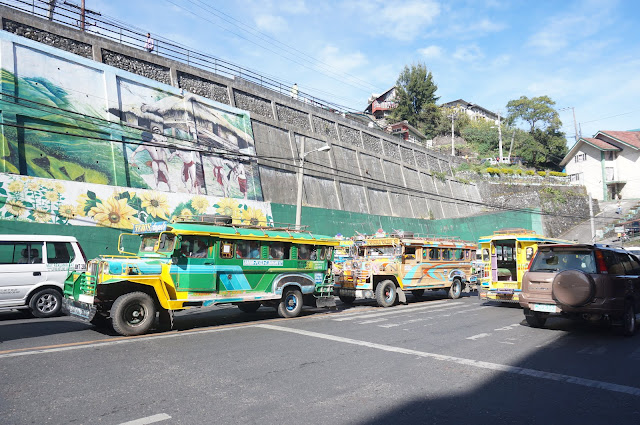 |
| Compared to motorcycles and tricycles, jeepneys and multicabs are safe because they take fixed routes |
3. Avoid Chartered Vehicles
Savings: Php 150-3,000
As much as possible, I avoid chartering my own transportation, including the habal-habal (motorcycle). Aside from taking up a large percentage of my daily budget, it forces me into a one-on-one with my driver. Although this presents a great opportunity to quiz him about anything and everything about the place and to gain local insight, it really is a game of luck of whether he will be friendly enough or too friendly.
To avoid such situations, I ask about alternative ways of getting from one place to another, even if it involves multiple transfers or lots of walking.
To avoid such situations, I ask about alternative ways of getting from one place to another, even if it involves multiple transfers or lots of walking.
 |
| Habal-habal drivers idly wait for passengers. Most of the time, you can hail one by the side of the road. |
4. Ask around for Alternatives
Budget: Varies
In line with the above, I have discovered that there is always another way of getting around, depending on how committed you are. Let me count the ways:
a. Walking -- Some travellers walk for hours on rugged terrain to get to a secluded waterfalls without chartering a habal-habal. I personally have walked 4kms with my full pack to avoid paying an overpriced Php100 tricycle fare. Along the way, I had the best taho ever.
b. Commuting with multiple transfers -- Chartered vehicles are perfect for conveniently going from one place to another. It is fast and direct but relatively expensive. Sometimes, public transportation is also possible but may take longer and more transfers.
c. Joining another group -- For boat tours especially, it is possible to come up and ask whether you can join their group and share in the rental fee. I once joined a group of students noisily taking pictures so that I didn't have to charter a boat of 15pax for myself.
5. Hitchhike
Budget: Php 0
To be used with extreme caution and in selected circumstances only, hitchhiking is not only free but also a thrill. I have hitchhiked on top of a garbage truck to avoid a steep climb, aboard a private boat to directly cross between islands, and on an MMDA Officer's motorbike to skip a traffic bottleneck. Again, use with extreme caution and in selected circumstances only.
Note: I haven't actually stood at the side of a road and held up my thumb. I don't recommend that.
Sunday, March 19, 2017
Pundaquit, San Antonio, Zambales
4-5 December 2016
Brgy. Pundaquit is a small fishing village in San Antonio in Zambales that is more popularly known as the jump-off point to camping destinations Anawangin Cove and Capones Island. Although normally overlooked in favor of uninhabited coves and a century-old lighthouse, Pundaquit features a soft mix of rural living among the fishermen and of touristy escapades with the arriving tourists that is set in its own sunset-facing semi-cove.
Typical fishing boats line the beach in the morning as some fisherman prepare their nets [far right] while others sort out the previous night's catch [middle center].
Lastly, Pundaquit lies at the foot of the Zambales Mountain Range and offers views of both the mountains and the sea, including some islets and a sunset.
Brgy. Pundaquit is a small fishing village in San Antonio in Zambales that is more popularly known as the jump-off point to camping destinations Anawangin Cove and Capones Island. Although normally overlooked in favor of uninhabited coves and a century-old lighthouse, Pundaquit features a soft mix of rural living among the fishermen and of touristy escapades with the arriving tourists that is set in its own sunset-facing semi-cove.
Typical fishing boats line the beach in the morning as some fisherman prepare their nets [far right] while others sort out the previous night's catch [middle center].
Two fishermen aboard "07 Rhea Mhey" lay down their nets just in front of the shore while the first group of tourists boat away to their destination [background center].
Even from the other side of the cove, tourists can be identified by their mandatory neon orange life vests. This group left at 7am on a Monday.
Passenger boats and fishing boats anchor alongside each other as boatmen either wait for new passengers to arrive or for the mid-afternoon to pass.
From one side of the cove, Camara Island overlays against Capones Island, offering a nice gradient of islets under the mid-day sun. A female holiday-maker documents her trip in the foreground.
Nipa huts equipped with bamboo tables & seating and karaoke sets line the path from the parking area to the beach and are mostly popular among day-trippers and locals.
Lying along the Zambales coastline, Pundaquit also offers seasonal surfing and features left-handed waves, after which the Look Left community resort was named. Capones Island can be seen in the distance.
Even from the other side of the cove, tourists can be identified by their mandatory neon orange life vests. This group left at 7am on a Monday.
Passenger boats and fishing boats anchor alongside each other as boatmen either wait for new passengers to arrive or for the mid-afternoon to pass.
From one side of the cove, Camara Island overlays against Capones Island, offering a nice gradient of islets under the mid-day sun. A female holiday-maker documents her trip in the foreground.
Nipa huts equipped with bamboo tables & seating and karaoke sets line the path from the parking area to the beach and are mostly popular among day-trippers and locals.
Lying along the Zambales coastline, Pundaquit also offers seasonal surfing and features left-handed waves, after which the Look Left community resort was named. Capones Island can be seen in the distance.
Lastly, Pundaquit lies at the foot of the Zambales Mountain Range and offers views of both the mountains and the sea, including some islets and a sunset.
Bonus:
A 15-minute tricycle ride from the beach is the town center of San Antonio where a local fair reminiscent of childhood 20-peso thrill rides, which threaten to fall apart anytime, are setup on occasions.Monday, January 30, 2017
Saving 2016
2016 was an extra challenging year for a number of reasons. I approached my lowest low, touched on insanity, and delved into the absence of meaning. As a response, I took comfort in isolation and unproductivity because these required nothing from me. As expected, none of my problems were solved and I just either delayed facing them or made them worse.
But I am not writing this to talk about how horrible my 2016 was. Rather, I am writing to recognize how it wasn't so bad after all and to move on from the monsters (and traumas) that were. I am writing this to save the year I worked so hard for, as well as my past self and all her hopes and dreams.
But I am not writing this to talk about how horrible my 2016 was. Rather, I am writing to recognize how it wasn't so bad after all and to move on from the monsters (and traumas) that were. I am writing this to save the year I worked so hard for, as well as my past self and all her hopes and dreams.
1. The Longest Travel So Far
On my first trip for 2016, I travelled for 3 months, traversing 7 provinces, sleeping in 10 different beds, and taking all modes of transportation. I originally hoped to extend it up to six months but circumstances favored coming back to Manila sooner. Before this, the longest I went was 30 days, as limited by timing considerations and visa restrictions. With this trip, there was no boyfriend, no office, and no commitment that I needed to come back for. There was just me, my laptop, and endless possibilities I can run to. So I moved between cities as I please, gauging on my mood and work requirements. Although opportunities eventually led me to stay put and to move back, this trip proved that I really can work and live anywhere (granted reliable internet connection is available).
2. Bali, Finally
Originally part of my first travel for the year, I was only able to get to Bali in October. I initially considered the destination as a marker as to whether I will be bold enough to assume a legitimate travel lifestyle (i.e. travelling for 6 months and more) or to retain the status quo of a semi-nomadic lifestyle. Although the destination never fulfilled that purpose, it served a bigger one -- that of gauging how strong and brave I have become. The journey to and through Bali was filled with brick walls and frustrations. But in spite of all those, I held myself up, achieved my travel targets, and managed a smile when needed. The legitimately nice people, warm beaches, and green rice paddies helped, of course.
3. A Job That Fed My Knowledge Craving And Bank Account
A year before, I resigned from my consulting job in place of a freelancing occupation that enabled me to work where and when as I please. I was prepared to sustain my lifestyle on this, even with the irregular inflow of projects and income. But opportunities always seemed to come my way and I managed to obtain a market analyst position. The work offered good compensation, set project schedules, and flexible work hours. It was a full-time, online-based job that matched my current preferences. On top of this, it allowed me to get paid for consuming information and accumulating knowledge.
4. Girlfriends Who Displace Boyfriends
I have always considered myself as "one of the boys" as I feel like they match my interests and preferences better. However, for the first time in my life, I found myself spending more time with girls than with guys and not even craving for male attention. LDRgirlfie was always there for rants and life realizations despite the distance and time zone; HSbestie accompanied me on impulsive road trips and engaged me on real talks; LMgroupie became a frequent dinner buddy with whom I discussed random, silly, and existential stuff about; HistorySissie indulged my interest in blogging and travel; and CohortCoussie endured awkward family gatherings and issues with me.
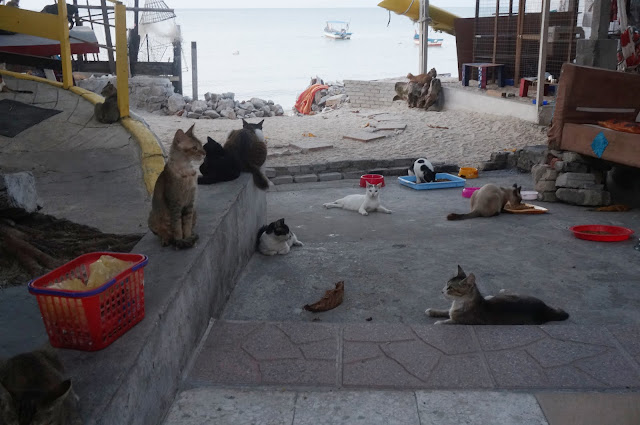 |
| I'm lazy to make a collage so here are kitties |
5. A Call To The Importance Of Health
One morning, I woke up with some tightness around my hip and lower back which I quickly attributed to the hard bed I slept on. A couple of months later, I learned from my chiropractor that my spine has been gradually rotating and has reached a point where my spinal nerves are being pinched between the spinal canals. This meant that I should avoid putting strain on my back lest I continually suffer from creeping pain from my hips to my knees. This was a big deal for me because it also meant no more backpacking, no more boxing, no more mountaineering and a lot of other activities that I enjoy. Only then did I realize that I need to pay more attention to my health and body in order to sustain the lifestyle that I want. Hearing the news sucked at first but it served as a wake up call that 'health really is wealth'. Since then, I have been investing more time and money on my wellness so that I don't have to endure any pain, discomfort, or distress that is avoidable in the first place.
Subscribe to:
Posts (Atom)





